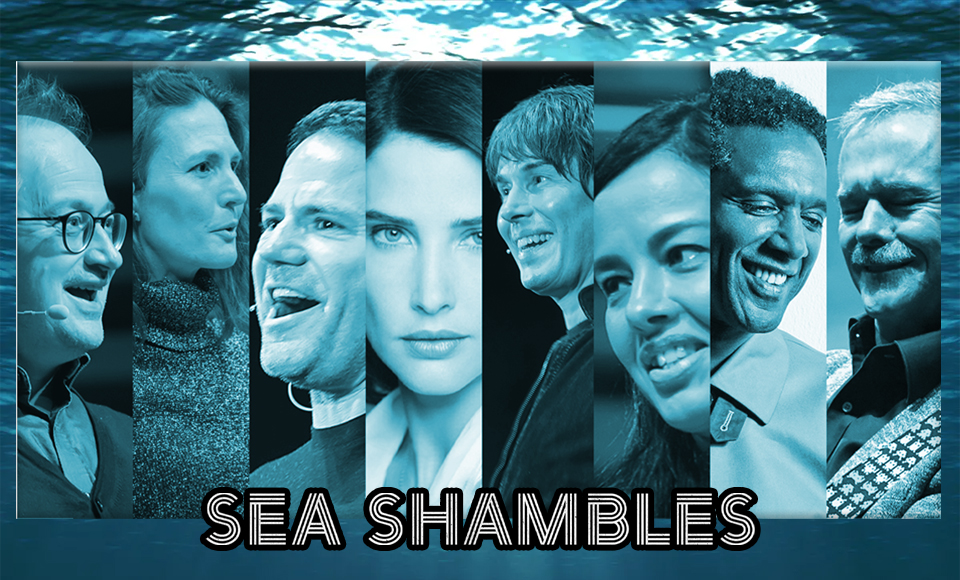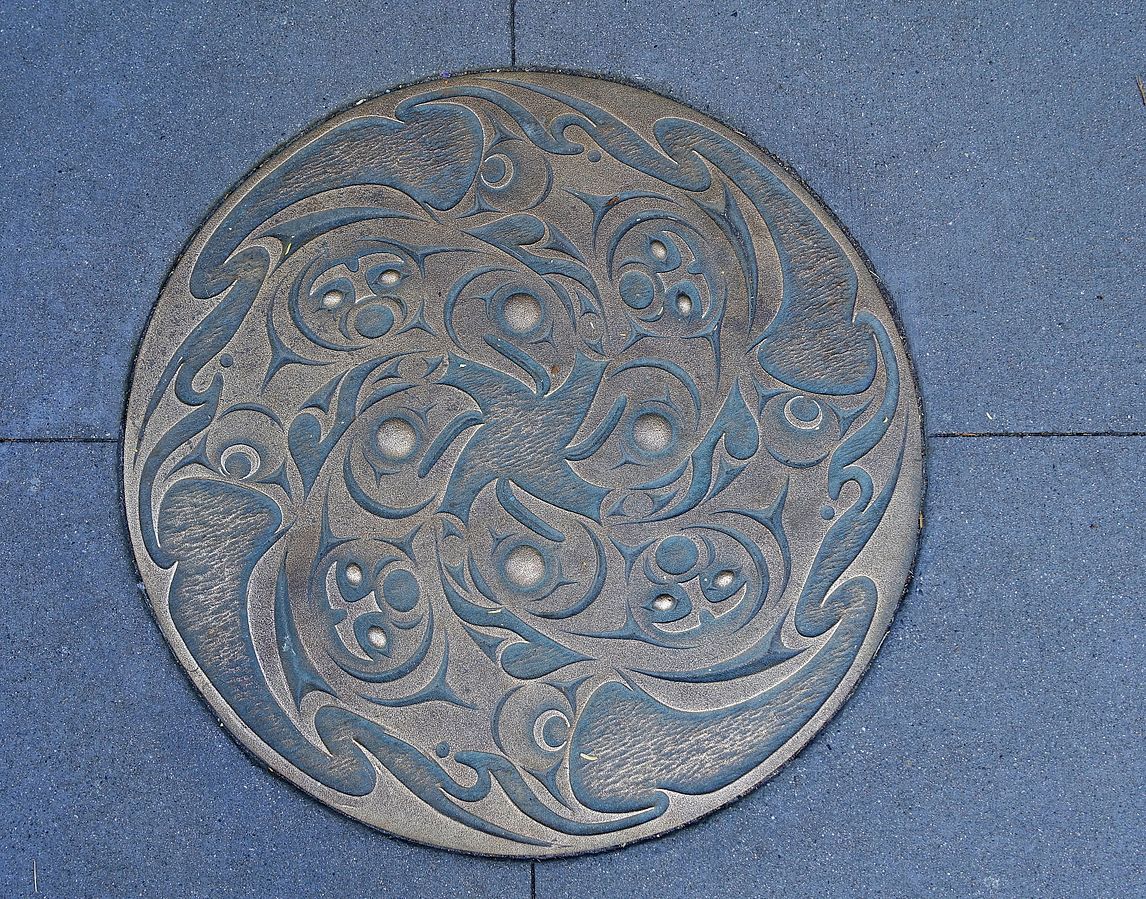Things have changed (but not the event date) since my March 3, 2020 posting about the Sea Shambles event in London’s (UK) Royal Albert Hall. It will now be livestreamed by the Royal Albert Home (series) and The Stay at Home Festival on May 17, 2020.

You may recognize Cobie Smulders (fourth from the left) from her stints on television (How I Met Your Mother and Stumptown) and in the movies (the Avengers films). Here’s a little more about her from her IMDb (Internet Movie Database) entry, some of which helps to explain her presence,
Cobie Smulders was born on April 3, 1982, in Vancouver, British Columbia, to a Dutch father and an English mother. As a girl, Cobie had set her sights on becoming a doctor or a marine biologist. …
…
Is a certified scuba diver and former model.
Here’s more about the updated Sea Shambles event (from the Cosmic Network Shambles May 17, 2020 event page),
With the live version of Sea Shambles sadly unable to go ahead for obvious reasons, it’s time to bring a rejigged version of the show direct to you on the same date and time, May 17th [2020] at 7:00pm [BT]. [For those of us on the west coast of Canada, that would be 11 am {PT}.]
Among the exciting names who will be joining hosts Robin Ince, Helen Czerski and Steve Backshall on the night are physicst Professor Brian Cox, astronaut Chris Hadfield, actor and ocean advocate Cobie Smulders, rock band British Sea Power, science broadcaster Liz Bonnin, poet Lemn Sissay, comedian Josie Long, marine biologist Helen Scales, singer-songwriter Jim Moray, performer and rapper Ben Baily Smith, actor Samuel West, climate scientist Dr Tamsin Edwards, comedian Katy Brand, writer and broadcaster Natalie Haynes, actor Rufus Hound, violinist Dunja Lavrova, laserist Seb Lee-Delisle, performer David McAlmont, singer/songwriter Grace Petrie, actor Reece Shearsmith and musician Steve Pretty. And, of course, we’ve got a bunch of surprises up our sleeves too…
So join us on a celebratory online voyage of discovery of our own blue planet and how we are best placed to protect it. We might not be on stage but we’re still bringing everything you’ve come to expect from one of the Cosmic Shambles Network’s signature variety shows. Including running over. This is set to be a 3 hour + extravaganza.
Lucy Noble, Artistic Director of the Royal Albert Hall, said: “We’re so excited to present this special version of Sea Shambles as part of the Royal Albert Home series. We would have loved to welcome audiences to the building to experience this spectacular show, but at the moment of course that’s not possible. This ‘at home’ version is the next best thing, with a truly staggering line-up of guests from the worlds of science, comedy and music.”
The show will be free to watch but as with all the shows during the Stay at Home Festival there will be a tip jar where people can leave a tip to help artists and venues hit hard by the ongoing COVID-19 crisis as well the Royal Albert Hall charity itself. With all our profits from the original live show set to go to marine charities we’ll also be highlighting and encouraging donations during the show to our three chosen charities, Bite Back, Surfers Against Sewage and Oceana.
Here’s a link that will get you to the livestreamed event on May 17, 2020 at 11 am (PT): https://www.youtube.com/watch?v=bBQmdbVeoKw#action=share
One last thing, Tara Lohan has written a May 7, 2020 article for The Revelator about a groundbreaking international treaty for protecting the high seas (Note: A link has been removed),
Most of us have never been to the world’s immense last wilderness and never will. It’s beyond the horizon and often past the limits of our imaginations. It contains towering underwater mountain ranges, ancient corals, mysterious, unknown forms of life and the largest seagrass meadow in the world.
Yet it begins just 200 nautical miles off our shores. Technically referred to as “areas beyond national jurisdiction,” these remote expanses are known to most people simply as “the high seas.”
Their vast, dark waters encompass roughly two-thirds of the ocean and half the planet and are the last great global commons. Yet just 1% are protected, leaving these vital but relatively lawless expanses open to overfishing, pollution, piracy and other threats.
That could change soon.
In 2018, after more than a decade of groundwork at the United Nations, negotiations officially began for a new treaty focused on conservation and sustainable use of marine biodiversity in the waters beyond national jurisdiction.
…

